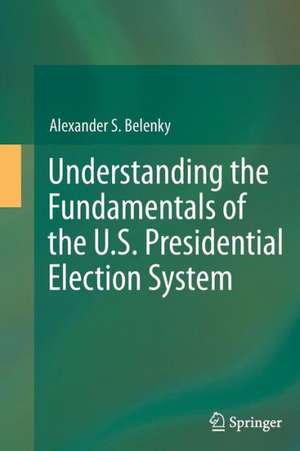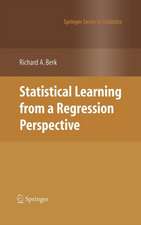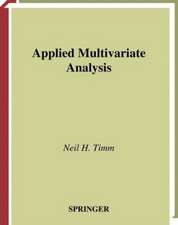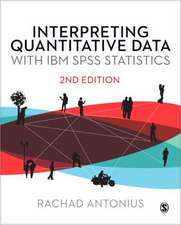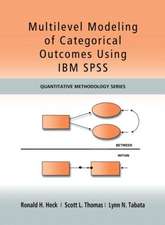Understanding the Fundamentals of the U.S. Presidential Election System
Autor Alexander S. Belenkyen Limba Engleză Paperback – 9 mai 2014
| Toate formatele și edițiile | Preț | Express |
|---|---|---|
| Paperback (1) | 1223.88 lei 6-8 săpt. | |
| Springer Berlin, Heidelberg – 9 mai 2014 | 1223.88 lei 6-8 săpt. | |
| Hardback (1) | 1228.29 lei 6-8 săpt. | |
| Springer Berlin, Heidelberg – 26 apr 2012 | 1228.29 lei 6-8 săpt. |
Preț: 1223.88 lei
Preț vechi: 1492.53 lei
-18% Nou
Puncte Express: 1836
Preț estimativ în valută:
234.21€ • 243.14$ • 195.30£
234.21€ • 243.14$ • 195.30£
Carte tipărită la comandă
Livrare economică 22 martie-05 aprilie
Preluare comenzi: 021 569.72.76
Specificații
ISBN-13: 9783642436062
ISBN-10: 3642436064
Pagini: 444
Ilustrații: XVIII, 426 p.
Dimensiuni: 155 x 235 x 23 mm
Greutate: 0.62 kg
Ediția:2012
Editura: Springer Berlin, Heidelberg
Colecția Springer
Locul publicării:Berlin, Heidelberg, Germany
ISBN-10: 3642436064
Pagini: 444
Ilustrații: XVIII, 426 p.
Dimensiuni: 155 x 235 x 23 mm
Greutate: 0.62 kg
Ediția:2012
Editura: Springer Berlin, Heidelberg
Colecția Springer
Locul publicării:Berlin, Heidelberg, Germany
Public țintă
ResearchCuprins
Introduction.- The constitutional origins of the election system.- Should the underlying concepts of the 1787 Great Compromise be honored.?.- Stubborn numbers: how much of a say does the nation have in presidential elections?.- What if? Constitutional puzzles, weird outcomes, and possible stalemates in presidential elections.- “Winner-take-all:” is it as bad as they paint it to be?.- Can the National Popular Vote plan succeed?.- When every voter gains and no state loses: can the “one person, one vote” and the “one state, one vote” principles coexist?.- How existing election rules may affect the structure of election campaigns.- Conclusion.- References.- Appendices.
Recenzii
From the reviews:
“This unique book combines thorough analyses of the constitutional, legal, and mathematical factors surrounding the election of a U.S. president. … the book offers an interesting combination of subjects and modeling techniques. … Belenky outlines several mathematical problems or research agendas that would improve the distribution of voting machines and ensure no voter waits longer than a specified maximum. … it is an invaluable reference to anyone interested in the intersection of mathematics and election systems.” (Jennifer M. Wilson, Mathematical Reviews, March, 2014)
“This unique book combines thorough analyses of the constitutional, legal, and mathematical factors surrounding the election of a U.S. president. … the book offers an interesting combination of subjects and modeling techniques. … Belenky outlines several mathematical problems or research agendas that would improve the distribution of voting machines and ensure no voter waits longer than a specified maximum. … it is an invaluable reference to anyone interested in the intersection of mathematics and election systems.” (Jennifer M. Wilson, Mathematical Reviews, March, 2014)
Notă biografică
Alexander S. Belenky is the author of books and scientific articles in the fields of optimization and game theory and their applications in transportation, industry, agriculture, environmental protection, advertising, brokerage, auctioning, and U.S. presidential elections. He is the author of Operations Research in Transportation Systems: Ideas and Schemes of Optimization Methods for Strategic Planning and Operations Management—published by Kluwer Academic Publishers in 1998 and republished by Springer in 2010—which has been adopted by many leading American Universities. Also, he is the author of the books Extreme Outcomes of US Presidential Elections (2003), Winning the US Presidency: Rules of the Game and Playing by the Rules (2004), and How America Chooses Its Presidents (2007, 2009). He was an invited guest on radio and TV talk shows throughout the country in the course of the 2004 election campaign, and he was the invited Guest Editor of Mathematical Modeling of Voting Systems and Elections: Theory and Applications, a special edition of Mathematical and Computer Modelling (2008),
Currently, Alexander S. Belenky is a tenured professor at the Department of Mathematics for Economics and a leading scientist at the Decision Choice and Analysis Laboratory at the National Research University Higher School of Economics in Moscow, Russia, and a visiting scholar at the MIT Center for Engineering Systems Fundamentals. He holds a Ph.D. degree in systems analysis and mathematics and a D.Sc. degree in applications of mathematical methods. His opinion pieces about voting systems have appeared in The Baltimore Sun, The Boston Globe, The Boston Herald, The Christian Science Monitor, The New York Times, The Plain Dealer, Providence Journal and in other newspapers.
Currently, Alexander S. Belenky is a tenured professor at the Department of Mathematics for Economics and a leading scientist at the Decision Choice and Analysis Laboratory at the National Research University Higher School of Economics in Moscow, Russia, and a visiting scholar at the MIT Center for Engineering Systems Fundamentals. He holds a Ph.D. degree in systems analysis and mathematics and a D.Sc. degree in applications of mathematical methods. His opinion pieces about voting systems have appeared in The Baltimore Sun, The Boston Globe, The Boston Herald, The Christian Science Monitor, The New York Times, The Plain Dealer, Providence Journal and in other newspapers.
Textul de pe ultima copertă
This is the first book on the U.S. presidential election system to analyze the basic principles underlying the design of the existing system and those at the heart of competing proposals for improving the system. The book discusses how the use of some election rules embedded in the U.S. Constitution and in the Presidential Succession Act may cause skewed or weird election outcomes and election stalemates. The book argues that the act may not cover some rare though possible situations which the Twentieth Amendment authorizes Congress to address. Also, the book questions the constitutionality of the National Popular Vote Plan to introduce a direct popular presidential election de facto, without amending the Constitution, and addresses the plan’s “Achilles’ Heel.” In particular, the book shows that the plan may violate the Equal Protection Clause from the Fourteenth Amendment of the Constitution. Numerical examples are provided to show that the counterintuitive claims of the NPV originators and proponents that the plan will encourage presidential candidates to “chase” every vote in every state do not have any grounds. Finally, the book proposes a plan for improving the election system by combining at the national level the “one state, one vote” principle – embedded in the Constitution – and the “one person, one vote” principle. Under this plan no state loses its current Electoral College benefits while all the states gain more attention of presidential candidates.
Caracteristici
Proposes how to make the national popular vote a decisive factor in determining the election outcome while keeping the Electoral College as a contingency plan Indicates a logical mistake in the text of the U.S. Constitution which has remained undetected for more than 200 years Analyzes the "Achilles Heel" of the National Popular Vote Plan to introduce direct popular presidential elections in the U.S. de facto, without amending the U.S. Constitution Discusses four puzzles of the Twelfth Amendment to the U.S. Constitution Includes supplementary material: sn.pub/extras
